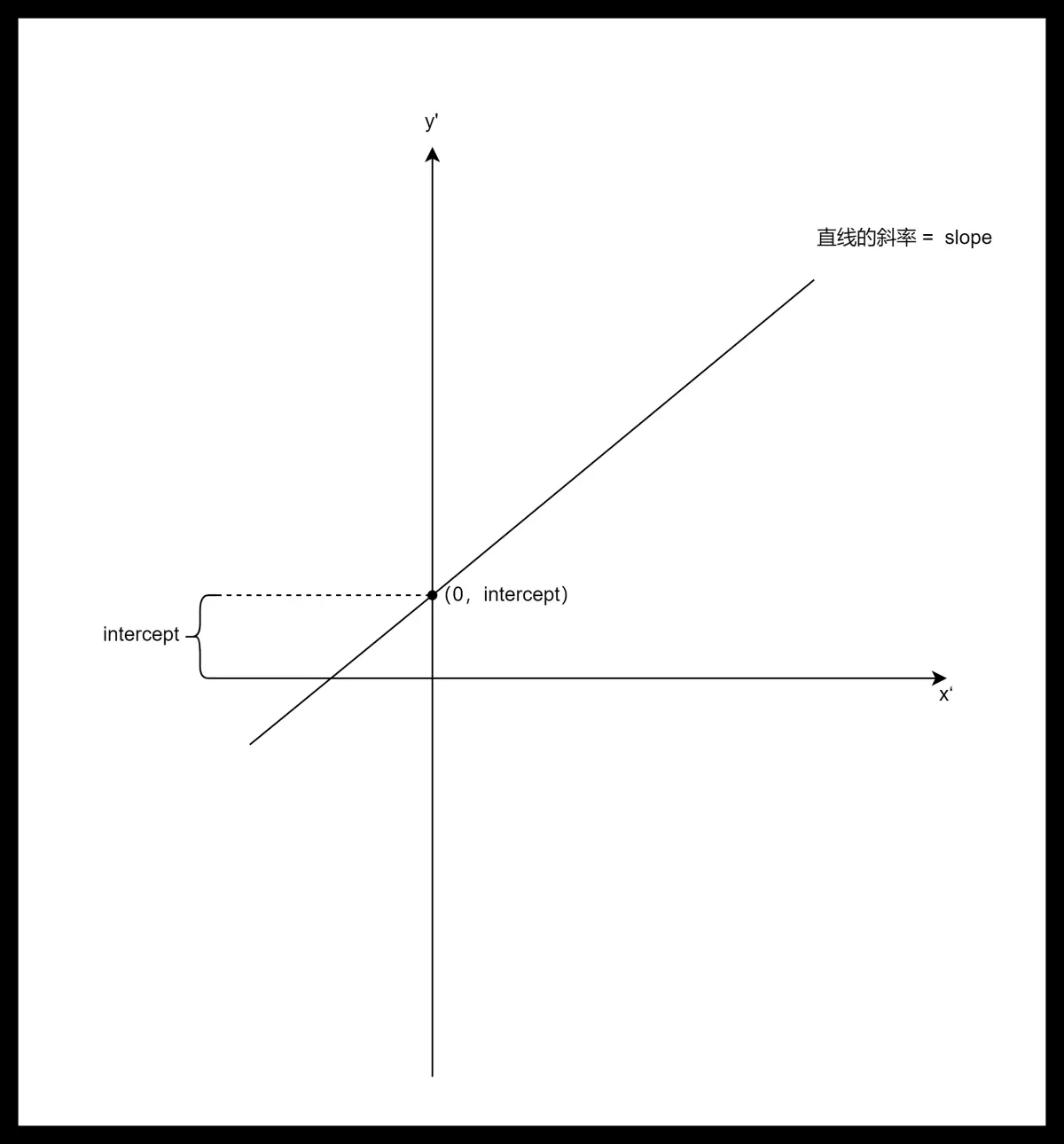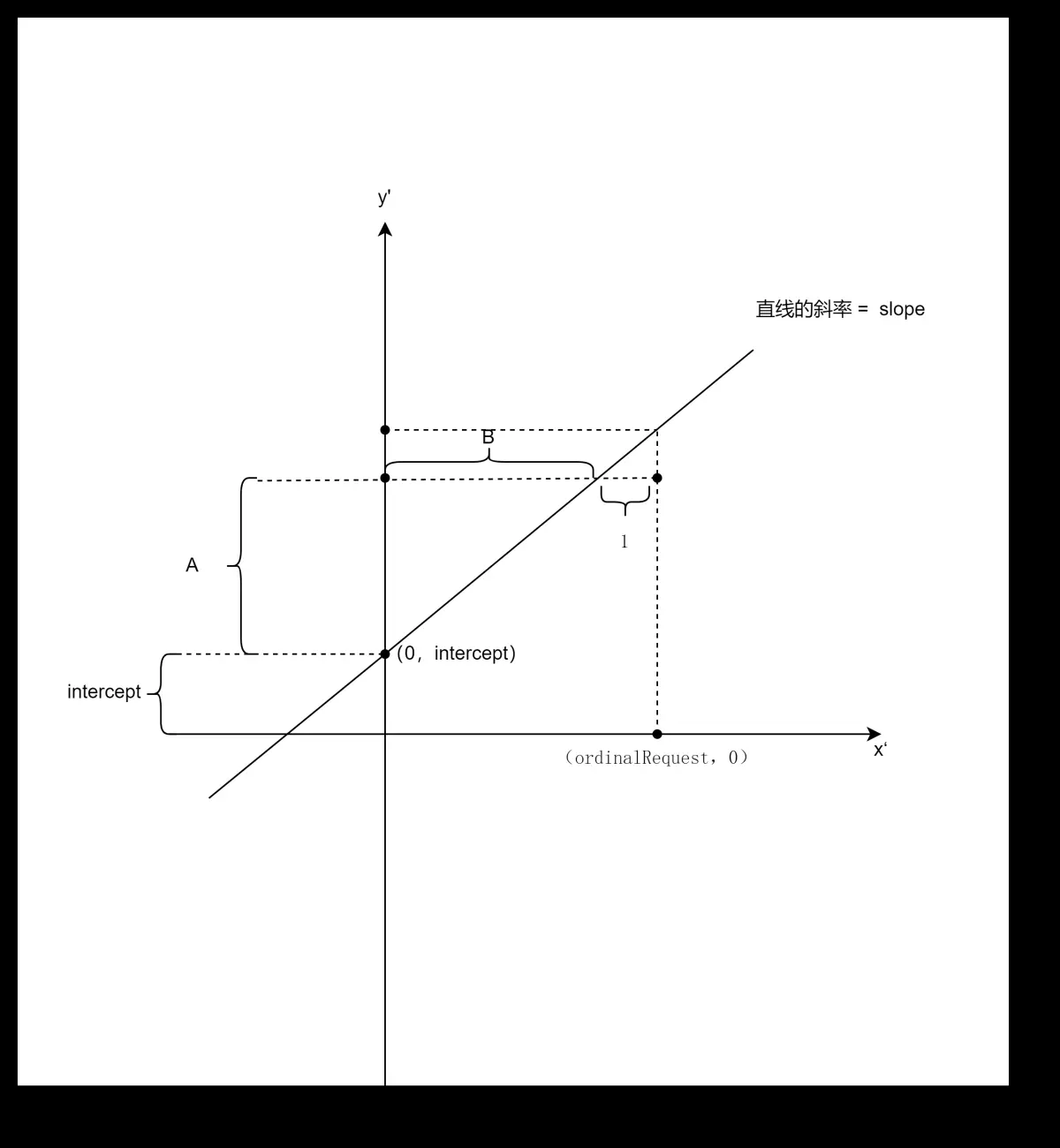[085]SW VSYNC模型更新与校准
背景
对于Vsync信号的相关领域中,一直有一座大山我一直没有翻跃,那就是SW VSYNC模型更新与校准。
经过认真阅读努比亚技术团队的文章SurfaceFlinger模块-VSYNC研究,我终于翻跃了这座大山。
本文是针对SW VSYNC模型更新与校准这部分的理解和补充,建议先看努比亚的文章再看我这个文章。
1.根据采样的时间戳更新模型
对应SurfaceFlinger模块-VSYNC研究文章中3.2 1 addVsyncTimestamp章节。 通过着6个样本,计算出x的因变量集合 ordinals,和y的自变量集合vsyncTS。通过6个样本把这两个集合的数据都计算出来,然后通过上面的方程式把回归系数和截距都计算出来,这块的回归系数就是Vsync的时间周期,前面我加过日志,我把这两个集合的内容可以贴出来看下,以下是90fps的vsync信息。 x的集合内容 {0,1000,2000,3000,4000,5000} ,从集合的内容是vsync的个数信息。 y的集合内容{0,11027000,22053000,33080000,44106000,55132000},从代码中了解是硬件vsync时间戳的递增值,
看了有点蒙圈,假设传入连续的六个时间戳,t是为任意值。
{t,t + 11027000,t + 22053000,t + 33080000,t + 44106000,t + 55132000}我们得到的其实是集合映射关系是M~T,m代表第m个vsync信号,t就是第m个信号时间戳,单位纳秒,也就是第m个vsync时间戳为t纳秒,第m+1个vsync时间戳为t + 11027000纳秒
M {m, m+1, m+2, m+3, m+4, m+5} ~ T {t,t + 11027000,t + 22053000,t + 33080000,t + 44106000,t + 55132000}这个M-T映射关系和上面努比亚文章中的x-y集合映射有什么关系呢?
x{0,1000,2000,3000,4000,5000} ~ y {0,11027000,22053000,33080000,44106000,55132000}我们看代码
// normalizing to the oldest timestamp cuts down on error in calculating the intercept.
auto const oldest_ts = *std::min_element(mTimestamps.begin(), mTimestamps.end());
vsyncTS[i] = mTimestamps[i] - oldest_ts;oldest_ts 就是T的集合中时间戳最小值,也就是t。每个时间戳在减去t,那不就得到了y集合。
y {0,11027000,22053000,33080000,44106000,55132000}currentPeriod 在90hz屏幕下固定值为11111111,vsyncTS[i] 就是y集合中数字,其中kScalingFactor 放大因子为1000, 根据以下公式,可以得到x的集合
static constexpr int64_t kScalingFactor = 1000;
ordinals[i] = ((vsyncTS[i] + (currentPeriod / 2)) / currentPeriod) * kScalingFactor;所以我们根据传入的六个连续vsync时间戳得到了努比亚文章中所描述的X和Y集合映射。
{t,t + 11027000,t + 22053000,t + 33080000,t + 44106000,t + 55132000}
得到了
x {0,1000,2000,3000,4000,5000} ~ y {0,11027000,22053000,33080000,44106000,55132000}假设y=bx + a是拟合x~y映射关系的函数,用以下公式来就先求中b的值 b = slope = top/bottom。
// Sigma_i( (X_i - mean(X)) * (Y_i - mean(Y) ) -----> top
// slope = -------------------------------------------
// Sigma_i ( X_i - mean(X) ) ^ 2 -----> bottom假设x=1000x',如何求y=b'x' + a'的函数曲线?
直接将1000x'带入y=bx + a中即可得y=b*1000x' + a 所以b' = 1000b, a' = a , 其中b'也就是下面这段代码中anticipatedPeriod = 1000 * slope = 1000 * top/bottom。
nsecs_t const anticipatedPeriod = top * kScalingFactor / bottom;//kScalingFactor = 1000因为a' = a,所以只要按照以下公式求得a,也就是intercept 就好了
//
// intercept = mean(Y) - slope * mean(X)
//但是由于anticipatedPeriod = 1000 * slope,所以下面需要除以kScalingFactor(1000)才能得到正确的intercept,也就是a'。
nsecs_t const intercept = meanTS - (anticipatedPeriod * meanOrdinal / kScalingFactor);小结
通过转化,将集合T转化成了x-y的映射关系
T {t,t + 11027000,t + 22053000,t + 33080000,t + 44106000,t + 55132000}
经过转化得到
x{0,1000,2000,3000,4000,5000} ~ y {0,11027000,22053000,33080000,44106000,55132000}根据x-y的映射关系,算出了y=b'x' + a'中b'和a'
b' = anticipatedPeriod
a' = intercept因为x=1000x',所以 y=b'x' + a'描述以下x'-y的映射关系的直线,所以努比亚文章中描述有点不准确。
x' {0,1,2,3,4,5} ~ y {0,11027000,22053000,33080000,44106000,55132000}为什么要加入1000的缩放因子,应该是为了提高计算的精准度。
二、已知上一次的vsync的时间戳求next vsync的时间戳
目前我们已经通过前面得到了一个函数y=b'x' + a'来表示以下集合的映射关系,其中b' = slope,a' = intercept
x' {0,1,2,3,4,5} ~ y {0,11027000,22053000,33080000,44106000,55132000}根据模型获得slope斜率,以及截距intercept,用图表示如下。
auto const [slope, intercept] = getVSyncPredictionModelLocked();
假设我们上一次的vsync时间戳为Time1,如果求得下一个vsync的时间戳Time2呢?
努比亚团队是这样子描述的,有点不是很清楚。 如果mTimestamps的集合不为空,通过这个集合的数据和传入的发射时间,算出一次线程回归方式的因变量x值,然后根据回归系数和截距,用方程式计算出自变量y值,而y值,也就是代码中的prediction,作为下一次vsync发射的时间。
以下代码描述了这个计算过程
auto const oldest = *std::min_element(mTimestamps.begin(), mTimestamps.end());
// See b/145667109, the ordinal calculation must take into account the intercept.
auto const zeroPoint = oldest + intercept;
auto const ordinalRequest = (timePoint - zeroPoint + slope) / slope;
auto const prediction = (ordinalRequest * slope) + intercept + oldest;用图来简单表示一下,可以好好思考一下,初中数学知识应该就就可以看得懂上述的计算方式。 其中A=timePoint - zeroPoint

三、总结
终于把SW VSYNC模型更新与校准这座大山翻过去了,感谢努比亚团队,随便其中部分描述存在让我看不懂的情况,努力思考,看代码,最后把整个逻辑看明白了。

